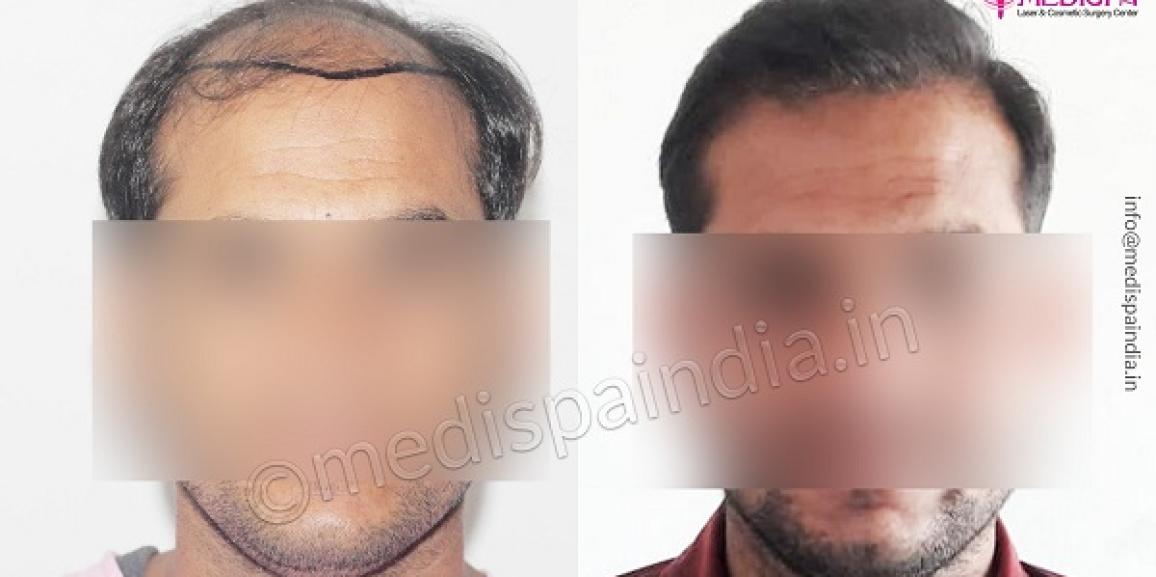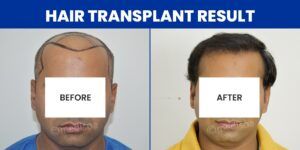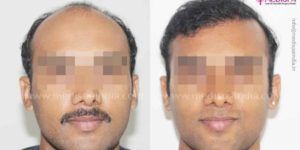
Hair transplant in Ghaziabad is a popular surgery for baldness treatment. Many hair loss patients have chosen the treatment, but many prefer to travel to India’s capital city, New Delhi, for hair transplant tourism. Ghaziabad is close to the capital city, making it quite convenient to commute there on a regular basis.
Hair transplant cost in Ghaziabad has decreased significantly, but the high quality of care encourages patients to travel to Delhi for hair loss treatment.
There are a few hair transplant clinics in Delhi that are well-known worldwide for their exceptional services. Medispa hair transplant clinic, located in the heart of Delhi at Greater Kailash, is one of the best clinics on the list. Dr. Suneet Soni, the creator of Medispa clinics, has a vision for an exceptional hair transplant industry, and his gift of unsurpassed skills has ensured that each patient receives the greatest care possible.
People aspire to have healthy, thick, and luscious hair. If you suffer from baldness, you would undoubtedly wish for one. This desire of yours can be realised with a hair transplant treatment.
Are you a good candidate?
Pattern baldness or genetic hair loss is the most common cause of hair loss in both men and women, and hair transplant is thought to be an ideal treatment for pattern baldness. When you see a doctor to discuss hair transplant options, your doctor will inspect, evaluate, and examine your hair loss problem as well as the predicted donor area to determine the procedure’s feasibility. Hair transplantation is usually recommended in circumstances where hair loss is stable. Hair follicles that are healthy and strong should be chosen for the process.
Did you consider the alternative treatments?
Although hair transplantation is a permanent solution to baldness, the doctor likes to recommend non-surgical options first. Other treatments for baldness include medications and PRP therapy. For the treatment of hair loss, medications such as minoxidil and finasteride have been found to be effective. However, it has been noted that in the majority of cases, it only provides short relief because hair loss can be reversed once the medicine is stopped. PRP therapy has also been reported to help with hair loss, with the platelet concentrate being injected into the appropriate location to encourage hair growth.
However, the outcomes are unpredictable and are only suggested in the early stages of hair loss. Hair transplant is the last resort for a patient when no other therapies have yielded satisfactory results, and the results are permanent and predictable.
Who would be the performing surgeon?
Before considering hair transplant surgery, the surgeon’s credentials are meticulously investigated. Before choosing a surgeon for the treatment, certain variables such as educational qualification, experience, reputation, capabilities, and decision-making abilities are examined. The treatment should be performed by a highly qualified plastic surgeon with extensive experience and dexterous skills. In order to determine the surgeon’s experience and skills, previous work before and after images of previous patients must be examined.
How are the facilities available at the clinic?
You may have heard a variety of hair transplant stories, some of which are amazing and others which are terrifying. The cause for this is the development of less expensive services in this industry, which is eroding the procedure’s credibility. In these less expensive clinics, only personnel with no expertise or training are employed to do the procedure. The end result is disappointment, with unacceptably poor results, heinous effects, and wasteful expenditures. The clinic should include cutting-edge amenities such as a well-equipped operatory, cutting-edge equipment with high-quality armamentarium, high magnification at every step, safety precautions, and stringent sanitary procedures. The team’s experience is also vital to consider before undergoing the surgery because it ensures that the treatment will go smoothly for perfect outcomes.
Which technique to opt for the hair transplant?
FUT and FUE are the two basic techniques for hair transplantation. These techniques are advised based on the patient’s age, sex, level of baldness, hair density available and required for the treatment, and hair follicle quality. The FUT technique may generate more hair grafts and is hence recommended in more extensive instances, whereas the FUE technique is recommended for facial hair transplant and early hair loss patients. During the consultation, the doctor would assess the patient’s hair loss and other relevant criteria in order to determine the optimal procedure technique.
What about the recovery process?
It is critical that you are aware of the recuperation process ahead of time so that you can prepare yourself. For the first few days following the operation, you may have minor side effects such as slight swelling, mild pain, and itching. It would take a week or ten days to fully recuperate.






